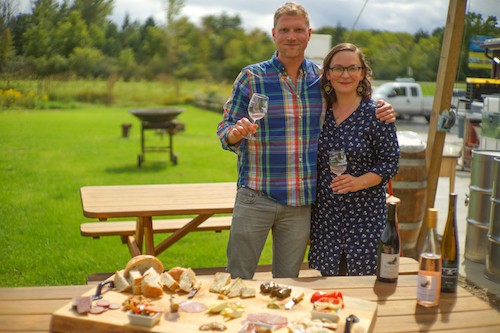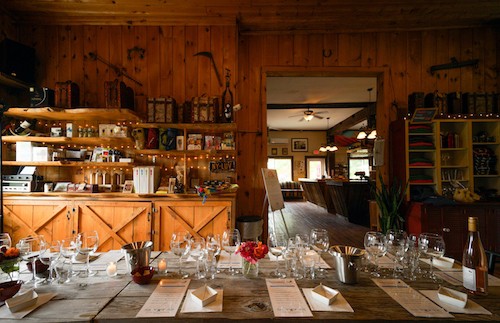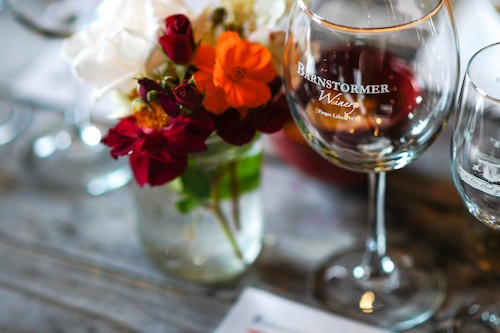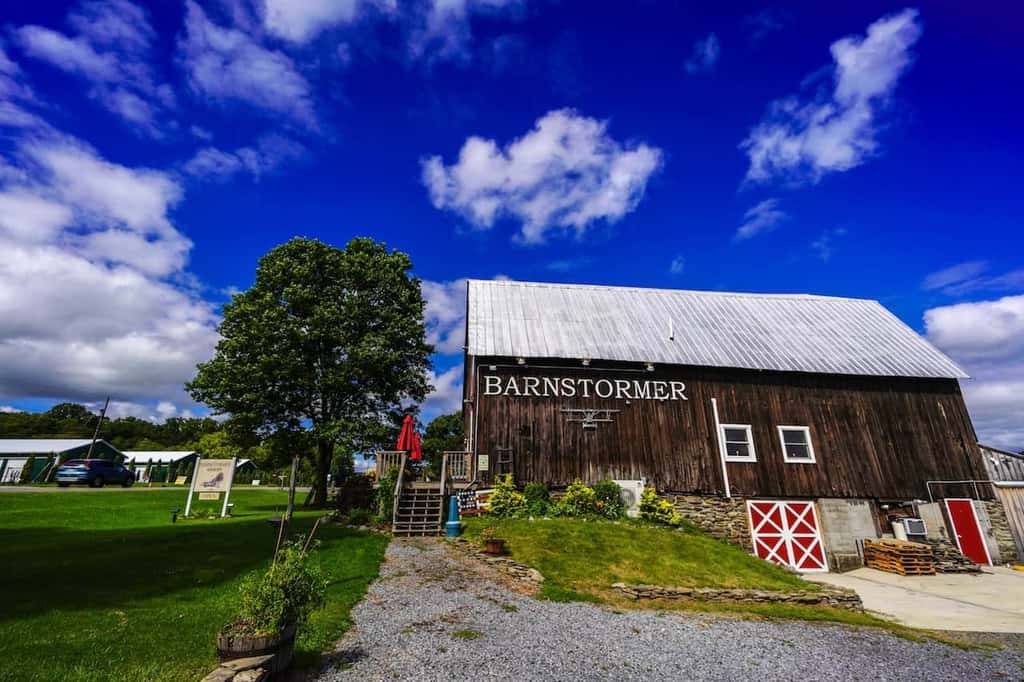“The Finger Lakes is the Finger Lakes. We are not California, although I do love West coast wines. We’re cool climate, meaning shorter growing seasons, higher acid, food friendly wines, renowned whites and unique, delicious reds…” says Scott Bronstein, proprietor/owner of Barnstormer Winery.
I had heard about Barnstormer Winery a couple of years ago, but I wanted to let that new car smell fade away, if you know what I mean. I wanted to taste the wines that weren’t the first or second vintages.
I’m sometimes on the fence about new (or newer) wineries. I’ll admit I come into it with questions: Where is your fruit from? Is it all Finger Lakes? Are they your vineyards? Or do you source fruit from growers? How long have they been doing it? Is this one of those “party” wineries or am I getting real-not-sugar-laden wine? I’ll admit, I think about these things, especially with so many new wineries in this region. After connecting with some of the staff at Barnstormer though, I wanted to get to know them and their wine, their philosophies, and their processes a little more.

Scott is a young guy, by industry standards, but that’s part of what makes his drive and the story of Barnstormer so intriguing: where will they be in 10, 20, or 40 years? As the owner, you can bet he’ll be a part of it. Where will the Finger Lakes region be as a wine region and community, too? These are all questions that I ponder when thinking about a winery like Barnstormer and a hands-on involved owner like Scott who wants the best for his winery.
Barnstormer opened in 2013 and sits on the southwest side of Seneca Lake, though their fruit is from various vineyards and growers around the Finger Lakes region. Della Hovanec is the tasting room manager, Kelly Van Scoyk is the assistant tasting room manager, and Scott is the proprietor and owner with his hands in everything – it’s common to see him involved in all aspects of the winery and vineyard. For this story, I’m catching up with Scott and Della. Della has been in the local wine industry over six years. She previously was also a local wine tour guide, and is studying to be a sommelier as well. Needless to say, they are both great stewards of the region, of Finger Lakes wine, and of their wine.
RELATED: How To Explore New York’s Seneca Lake Over a Long Weekend
Barnstormer’s winemaking process is unique in the Finger Lakes (FLX) region, with different winemakers contributing their expertise. Most wineries have one head winemaker and a few assistant winemakers, in addition to many others helping along the way. Barnstormer chose a different route: they work with a handful of different winemakers in the region as consultants. That is, each consultant is a winemaker at another local winery, many of whom have been doing it a long time. In a way, each consultant is essentially a specialist for a certain type of wine or wines.

As an example, respected local winemaker Peter Bell of Fox Run Vineyards just up the road has consulted on some wines. Kelby James Russell, winemaker at Red Newt Cellars, and Ian Barry, owner and winemaker at Barry Family Cellars have also consulted Barnstormer. Ian Barry has worked with Barnstormer for several years, consulting on about 12 wines. There have been more specialized and focused collaborations in the past with winemakers such as Steve Shaw and David Breeden. At the end of the day, however, the final decisions come down to Scott. Each winery and sometimes each wine has a style or a preferred style, and it’s decisions like these that help round out the portfolio at Barnstormer.
Let’s get to a couple of questions with Scott and Della:
A Conversation With The Barnstormer Team
Winetraveler (WT): How would you describe your (Barnstormer’s) style?
Scott: Quality, not quantity. Dry is the focus, but we also have an excellent semi-sweet Riesling and Blaufränkisch Port. Doing the work in the vineyard; the fruit should be clean, and at its optimal ripeness. Some years we struggle with peak ripeness, so it’s important to pay close attention and work closely with our growers. It’s also important to honor each vintage. Minimal intervention, cellar tweaks, honoring fruit, site growers, etc.
We strive to produce quality wine and the ability to have such great contributors to our mentorship. The reds are doing really well, the Cabernet Franc, Blaufränkisch, the (Sangiovese) Rosé is unique, and each year is quite different.
WT: How do you present and represent Barnstormer? And what would you like people to know about your processes here?
Della: We want to present and represent wine in an accessible way. No matter who comes in, we want to be able to have something that they will enjoy and educate them along the way in their tasting.
Every wine has dozens of hands involved in its production. It’s important to honor those people and those processes. There’s rarely one person getting a wine from grape to bottle. So many people contribute to the complexity.
WT: What’s your (Barnstormer’s) role in the larger Finger Lakes wine community?
Della: We want to welcome people to the region. We are gatekeepers to the region in a way. We are responsible for the experience of the customers, which is something we take pride in every day. We talk about the region as a whole and make recommendations based on the places and people we like to visit.
When you visit us, you’re going to learn something. You’re going to have fun, but you’re going to learn something about wine and local culture. Supporting our region is a large part of what we’re all about. We gauge the taster’s knowledge, and we want to empower them with additional knowledge about the Finger Lakes. A win for one of us is a win for all of us.”
Scott: Here in the Finger Lakes, we’re a community. I think Della nailed it!
WT: What are you focused on? And what’s important to you here at Barnstormer?
Della: We’re focusing on the wines that perform well, those that have staying power, doing things that are small batch, limited production. Single barrel wines, single vineyard sites, unique terroir, and different growing styles.
Scott: It’s also important to us that we’re contributing to elevating the region. A focus on high quality customer experience is paramount to our brand and the region. Also, we’re not just making Riesling. We make a variety of high-quality, European style wines.

Right now, Barnstormer produces about 3,000 cases per year. A mix between white, red, semi-sweet, port (Yes, port!) and late harvest. What about the future? Barnstormer has three acres (about one hectare) of their own Blaufränkisch, Cabernet Franc, and Riesling.
Currently, they source their fruit from growers within a 30 mile radius of their winery. About half of the production is on site at Barnstormer, and the rest is at other wineries such as Red Newt for their Riesling program. In the past few vintages, there have been four or five different winemakers contributing each year. Scott says that it’s important for Barnstormer to have a “think-tank” style for each wine and to take the input from each winemaker and their expertise, but at the end of the day, the final decisions come down to himself and Barnstormer.
At Barnstormer there is truly something for everyone. This is a risk, a calculated risk, but if done right, it can pay off in the end. If a winery has “something for everyone,” and you never know who will show up wanting to taste, they’re bound to attract and develop a diverse following of people with many different tastes and preferences. The opposite approach is focusing on two or three varietals. Barnstormer is narrowing its focus down to Riesling, Cabernet Franc, Blaufränkisch, and Syrah.
For me, personally, the reds stand out at Barnstormer. In a region known for Riesling – and deservedly so – it’s a welcome approach to have the reds be a strength, in addition to the white wine options. Don’t get me wrong, I think the Gewürztraminer is very good, as is the Riesling; but, the Blaufränkisch, Cabernet Franc (both the regular and reserve), the Departure “Bordeaux” blend, the Syrah, and the Cabernet Sauvignon are all very good across the boards. I’m quite picky with Meritage/Bordeaux blends, and Cabernet Sauvignon as well, but these are, of course, cool climate reds – vibrant, energetic, lighter bodied overall, more acid, beautifully balanced and structured with sufficient tannins challenging the acidity and fruit. The current vintage Blaufränkisch, one of my favorite red varietals, is a show-stopper, too.
Barnstormer is exciting to me. Yes, they’ve on the newer side, but their approach – working with experts/consultants – has proven to work quite well. What’s more; I’m encouraged to see where they’ll be in years down the line, especially considering the current quality they’ve demonstrated. There are only a handful of (Finger Lakes) wineries who are known well outside of the Finger Lakes. In the future, as Barnstormer continues to grow, I can see them developing into one of those wineries and producers who are known nationally and possibly internationally – that’s what excites me – the future of the Finger Lakes here at our fingertips, and they’re already doing it very well!
Interested in visiting Barnstormer? Learn more about stopping in for a wine tasting here.
